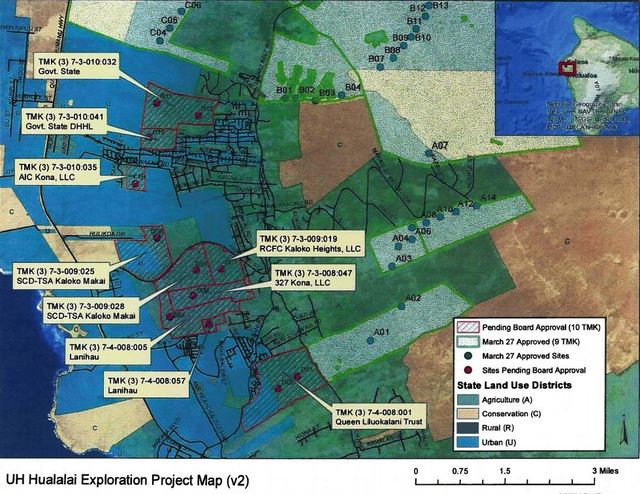A lawsuit was filed Wednesday in Environmental Court seeking to require an environmental assessment for a geothermal exploration project on Hualalai.
The nine plaintiffs include six West Hawaii residents who live on or near the mountain and representatives of two groups that have opposed geothermal development in Puna — the Puna Pono Alliance and Pele Defense Fund.
Plaintiffs say they are concerned about potential impacts to Hualalai’s “sensitive cultural and natural environment.”
The University of Hawaii survey, funded by U.S. Department of Energy and state Department of Land and Natural Resources, will occur on 19 parcels on agriculture land.
Noninvasive techniques will be used to measure the electrical conductivity of rocks as deep as 20,000 feet to determine their temperature and water content. The process will allow researchers to avoid drilling exploration holes, according to the university.
The magnetotelluric survey involves two or three antennas and four specialized contact electrodes connected to a data recording system. The devices will be placed between 1,600 feet and 3,200 feet apart at the survey sites.
The project is part of an overall “Geothermal Resources Exploration Plan for Hawaii.”
DLNR provided an exemption for an environmental assessment as long as survey sites were not located in “urban or conservation land use districts or in sensitive environments.” The plaintiffs say they want the court to determine whether the exemption was legal.
The project would have initially included urban and conservation lands, but those sites were later switched to only involve properties in the agricultural district in order to avoid an environmental assessment.
Donald Thomas, director of The Center for the Study of Active Volcanoes at University of Hawaii at Hilo, said there wasn’t enough funding to complete the assessment for the project.
An archaeological survey was done, he said, but no cultural resources were found at the survey sites.
DLNR’s Historic Preservation Division requested an archaeological field inspection by a qualified archaeologist prior to the start of the survey.
“Multiple historic properties have been identified throughout the subject parcels, and likely an even greater remain undocumented,” the division said.
The plaintiffs noted the division’s comments in their lawsuit.
Thomas said the survey will remain on hold until the lawsuit is resolved.
Email Tom Callis at tcallis@hawaiitribune-herald.com.



